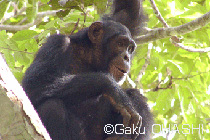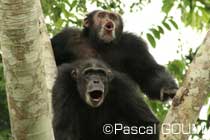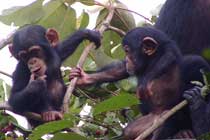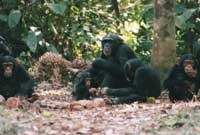HOME » The Chimpanzee
The Chimpanzee
SUBSPECIES AND HABITAT
The chimpanzee is listed as Endangered in the IUCN Red List of Endangered Species (IUCN, 2008). The Robust Chimpanzee (Pan troglodytes) is an omnivorous ape found in a variety of wooded habitats across equatorial Africa. Typically, chimpanzees inhabit evergreen forests, but marginal populations also thrive in deciduous woodland and grassland and savanna habitats, interspersed with gallery forest.
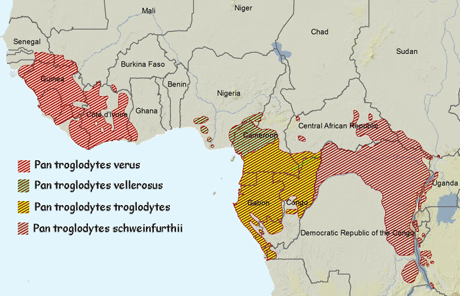
There are four sub-species of the
Robust Chimpanzee. These exhibit mutually exclusive geographical ranges
and include: The Western Chimpanzee (P. t.verus), which is the
sub-species most endangered with extinction, second to the Nigerian
Chimpanzee (P.t.vellerosus), and the Central African Chimpanzee
(P.t.troglodytes) and finally the Eastern Chimpanzee (P.t.shweinfurthii).
Recent evidence suggests that the Western Chimpanzee may, however, in
fact be a separate species altogether (Morin et al., 1994).
The majority of the populations of the Western Chimpanzee are found in the Upper Guinea Forests. These forests are among the most biologically rich in the world. They are unfortunately also among the most threatened. The Guinean Forest has been designated as one of the world's 25 hotspots for biodiversity (Myers et al., 2000).
BOSSOU is one of six long-term chimpanzee field sites in Africa.


